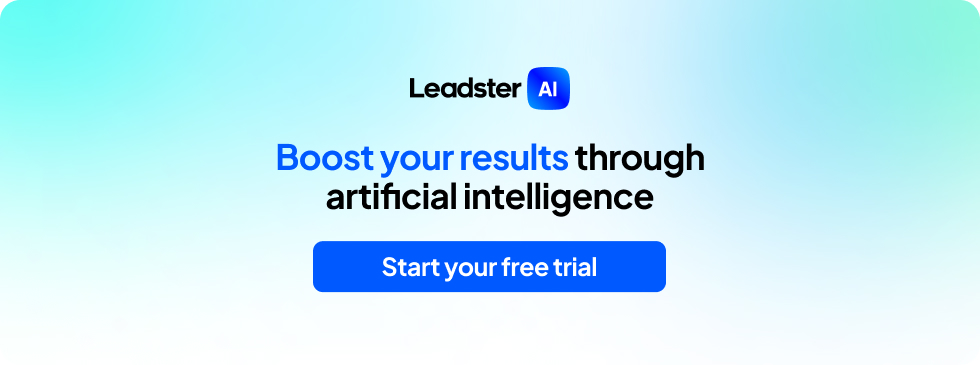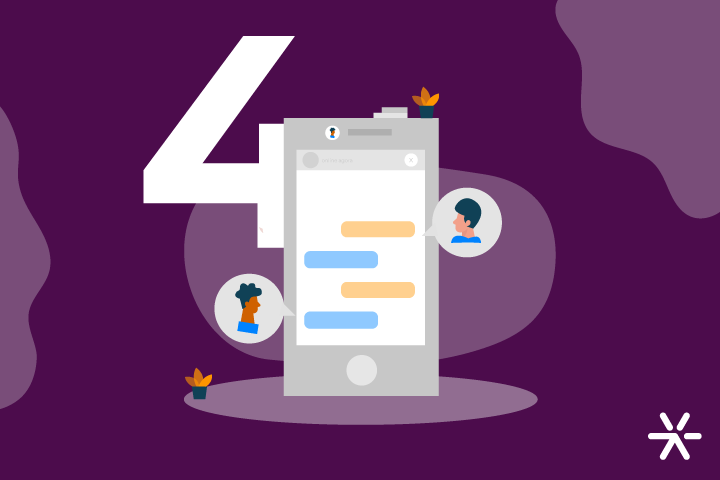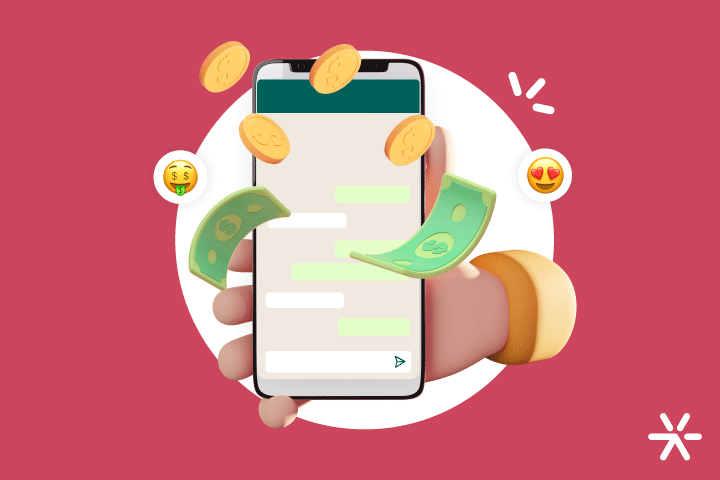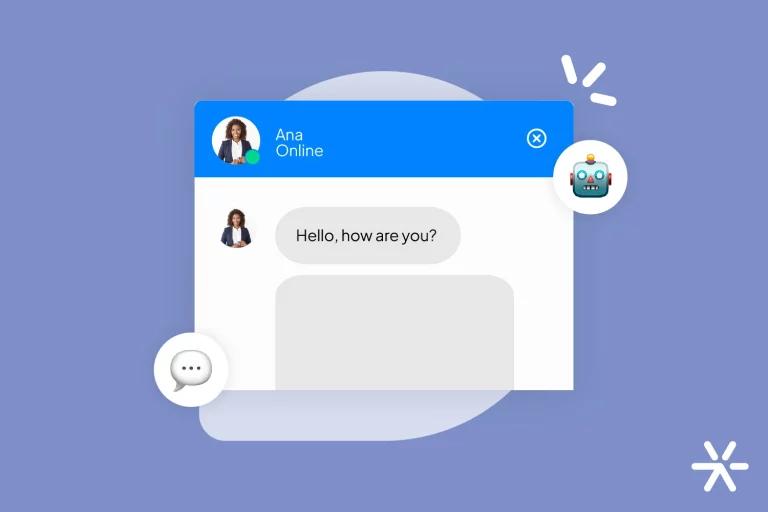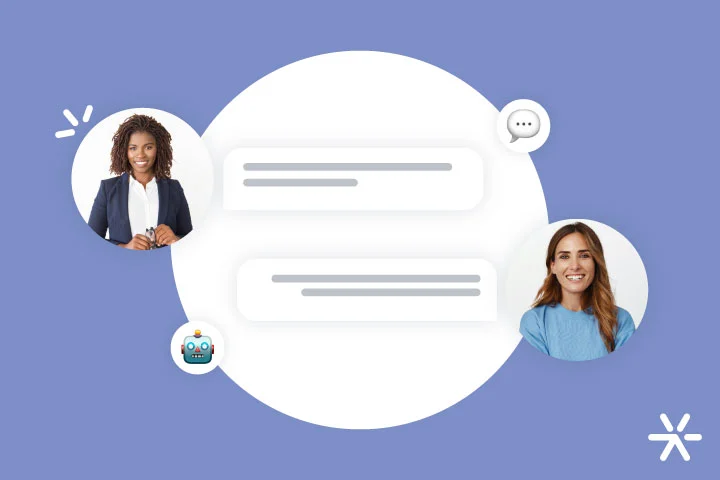How To Increase Website Conversion Using Chatbots
If you’ve made it to this article, you already know that chatbots are excellent tools for increasing website conversion rates, especially when compared to static forms.
Now, if you’re ready to move into practical implementation and start collecting results, check out this article on 4 proven ways to boost your website’s conversion through chatbots.
How do chatbots increase sales and conversion throughout the funnel?
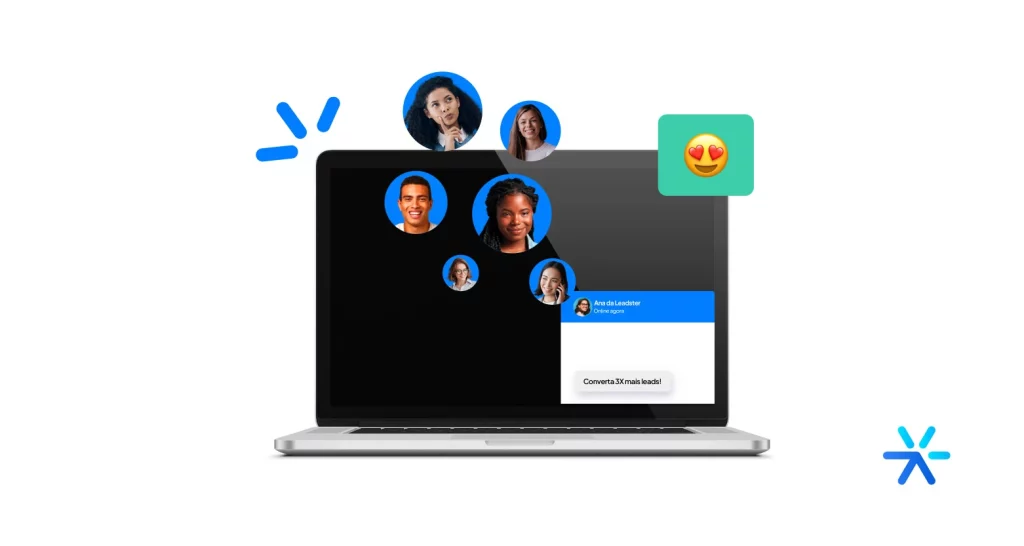
Need to deepen your knowledge before getting into practical implementation?
Then discover how chatbots impact conversion rates and the main benefits offered by this type of tool.
Chatbots are more effective in capturing visitor attention
What grabs more attention when entering a website: a static form or a chatbot that adapts to the visitor’s needs and interests?
Certainly, the latter stands out.
And capturing users’ attention—who take only a few seconds to decide whether to stay or leave a page—is the first step in establishing a connection and guiding them towards conversion.
They have personalized CTAs according to the lead’s profile and funnel stage
Another factor that enables increased conversion with chatbots is the ability to offer visitors a customized experience, including changing the call-to-action text, distinguishing itself from generic CTAs found on websites or landing pages.
This type of conversational marketing tool allows you to create scripts based on each visitor’s perspective and thus deliver what they want, in the simplest and fastest way possible.
They generate higher engagement in data collection
One of the biggest challenges in lead generation is ensuring that visitors connect with your brand long enough to decide to establish a relationship of trust and provide some personal data.
Chatbots, by capturing attention as mentioned earlier, can establish this connection more quickly, delivering what visitors want to know in just a few clicks, without them needing to search the site for information.
This increased engagement also extends to data sharing, as simulated conversation makes everything feel more natural and fluid.
They facilitate lead qualification and direction
By providing fast, facilitated, and personalized assistance, companies gain valuable information throughout the entire contact or interaction period.
With automated assistance, you can work more dynamically than with static forms, capturing lead data and beginning to qualify the contact from the outset.
This way, you gain deeper insights into consumers, collecting a much larger volume of information.
Moreover, various conversational marketing tools allow integration with sales systems.
Thus, qualified leads are directed to the sales team actively or passively.
They enable data analysis and decision-making
With chatbots, your brand also gains access to another type of data analysis.
This is because you can understand not only the number of drop-offs but exactly at which point in the interaction visitors stop converting or following suggested actions.
This type of data understanding isn’t possible with pages featuring static forms, where all you know is the conversion rate and dropout rate, with less clarity on what worked or didn’t in the argumentation.
Another advantage chatbots offer is storing partially filled data.
In other words, even if a visitor doesn’t provide all requested data, the tool stores what’s available, allowing you to work with that information.
4 proven ideas to increase your website’s conversion with chatbots
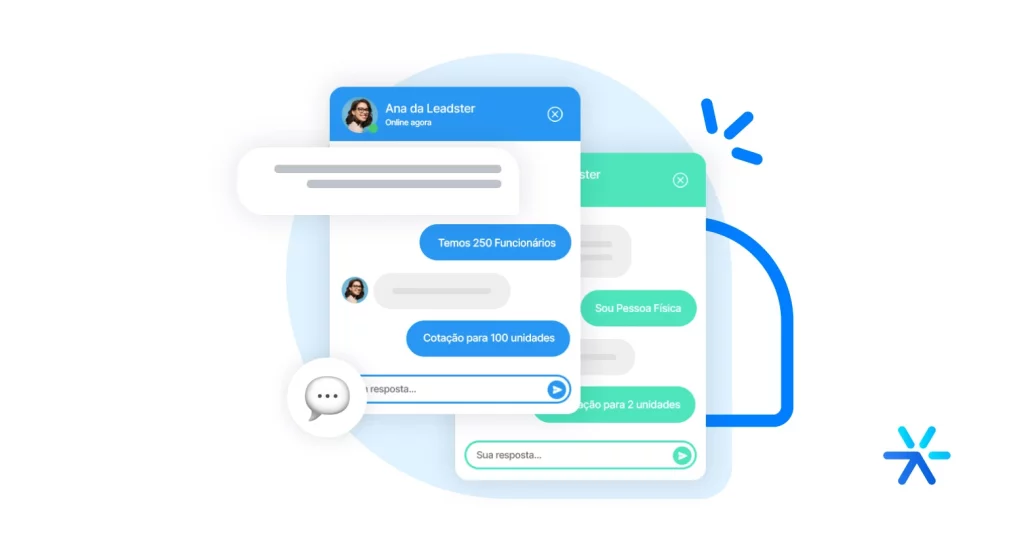
Based on the methodology we’ve implemented in Leadster’s chatbot tool and our own and our clients’ lead generation experiences, we’ve identified four proven ways to enhance your results:
Personalize the approach on the homepage according to the lead’s origin
Visitors from different origins may have different intentions when visiting your site.
Developing specific approaches based on channel, campaign, or device of origin helps create more personalized communication and increase conversion.
Origin channel
One way to personalize the approach is by considering the visitor’s origin.
First, take into account the channel, such as ads, other websites, organic search, social media, emails, etc.
Campaign origin (UTMs)
At a deeper level, the approach can be further personalized using UTM codes.
UTM (Urchin Traffic Monitor) is a type of code added to URLs to identify the source of access to a specific page.
These parameters can be created using a UTM generator.
We recommend using the version provided by Google.
Thus, in addition to knowing that a particular visitor came through Facebook Ads, you can monitor exactly which campaign, ad, and link brought them there.
Origin device
Understanding the access device is important because behavior and context provide relevant information.
Generally, visitors browsing on mobile seek quicker, more immediate information, even in an earlier buying stage.
On the other hand, visitors accessing via desktop typically do so when they have more time and attention, in a more advanced stage of the funnel.
Therefore, approaches for these two groups should also differ.
Do you know if your visitors are reaching your site and conversion pages via mobile or desktop?

Create a specific approach for your pricing/plans page
The more aligned with the site visitor’s needs, the better the customization and the results obtained through it.
Pages should also be considered when setting up your chatbot and should be separated within different stages of the sales funnel.
On bottom-funnel pages, such as pricing, plans, or quote request pages, the buying intent is much clearer—and the approach can be more direct.
Custom approach for the Ristori Plans and Pricing page
Create different approaches for each product page
If your site features multiple products, it’s also beneficial to customize approaches accordingly.
After all, each product or service in your range addresses a different pain point.
You can explore these points by adding a chatbot to specific pages or customizing it according to the accessed theme.
Offer content or subscribe leads to the newsletter on your top-funnel pages
For top-funnel pages like blogs, you can also generate conversions that will be nurtured in a flow or will generate engagement in your base.
Someone accessing your company’s blog has different interests from someone visiting the pricing page or requesting a quote, right?
Therefore, the approach needs to be different, or you’ll scare away interesting leads who aren’t yet ready to buy and thus miss out on opportunities.
Best practices to increase conversion with chatbots

Are you already using a chatbot tool on your site and want to improve its performance?
Or are you in the planning phase for this type of investment?
Be sure to check out some tips that make a difference in practice with our clients.
Understand visitor expectations
Remember how we talked about the power of chatbot personalization?
This advantage can only be leveraged if you understand what works with each visitor profile.
To do this, map out the pain points of your audience and the type of visitor accessing each page of your site.
Thus, consumers at different stages of the sales funnel are approached according to what they seek and expect to find.
Highlight the main benefit
After understanding what the visitor expects to find, create approaches and CTAs and highlight these benefits in these texts.
To do this, you can explore text features like bold, italics, or underlining to make the excerpt stand out.
Be direct!
Remember, you only have a few seconds to capture the desired attention.
The attention window is short, so the initial call-to-action must be brief and well-written to make the visitor want to start a conversation.
Use emojis 😄
Emojis are part of the universe of chat apps and instant messaging, such as Messenger and WhatsApp.
They are great visual resources to capture the visitor’s attention and stimulate interaction.
Ask questions with a “yes” response
Chatbot question scripts are fully customizable and therefore are so relevant in conversion strategy.
Well-written, persuasive arguments can be key to further increasing lead generation.
Therefore, one of our tips is to prioritize closed-ended questions in this interaction script that can be answered positively.
Let’s use an example here from Leadster’s context.
Since our solution is interesting for companies that struggle with generating cold leads, we could use two approaches to grab our persona’s attention:
“Do you generate hot leads? Talk to us!”
“Would you like to know how we can help you generate hot leads?”
The second approach is much easier to generate interaction because it’s simple, direct, can be answered with “yes,” and relates to the visitor’s pain, thus generating higher conversion.
Do this exercise for your chatbot’s questions as well.
Ask only the essential
The fewer data requested during interaction, the higher the conversion rates.
So, ask only the essential data for qualification at that specific funnel stage.
Data requested in top-of-funnel conversion differs from bottom-of-funnel conversion, for example.
Build conditionals into the conversation
Even within the same page, you may encounter visitors with different pain points and objectives (especially if that page is more comprehensive, like the site’s homepage).
Therefore, it’s also important to create conditionals within the conversation, directing the user to the correct flow based on their responses and qualification profile.
FAQ about chatbots

What are chatbots?
A “chatbot” is software that generates automated conversations and interactions between a system and consumers through predefined texts.
They can be used to clarify doubts, assist with commercial processes, offer personalized content, and even process payments.
Through various technologies, applied chatbots can store response data and habits of each person with whom the interaction occurs.
Furthermore, they make it possible to understand consumer needs and deliver the right, instant response to solve specific problems.
Do chatbots work with data storage systems and with the programming of automatic responses for interactions with consumers that enable scalable service between the company and its audience.
What are the types of chatbots?
There are various types of chatbots that can be divided according to the implementation objective, type of intelligence used, complexity, and type of configuration.
- Objective: service, online marketing, sales, online chat;
- Type of intelligence: rule-based or artificial intelligence-based;
- Complexity: option selection, context, or keyword recognition;
- Configuration: code-based or DIY chatbots.
How to create a free chatbot?
There are several tools on the market that offer free trials so you can try a chatbot on your site and reap the benefits offered.
Before starting the trial, we recommend understanding which type of chatbot is ideal for your needs, look for cases in your sector, and thus define the one that will best meet your needs.
How to Create a Free Chatbot with Leadster?
Ready to put a chatbot on your company’s website and thus increase conversion rates?
Explore Leadster’s demo to understand the possibilities for your brand.
With customization, data analysis, and segmented approaches, you can generate up to 3x more leads and qualify them from the first contact.
Start your 14-day free trial now, no credit card required.
